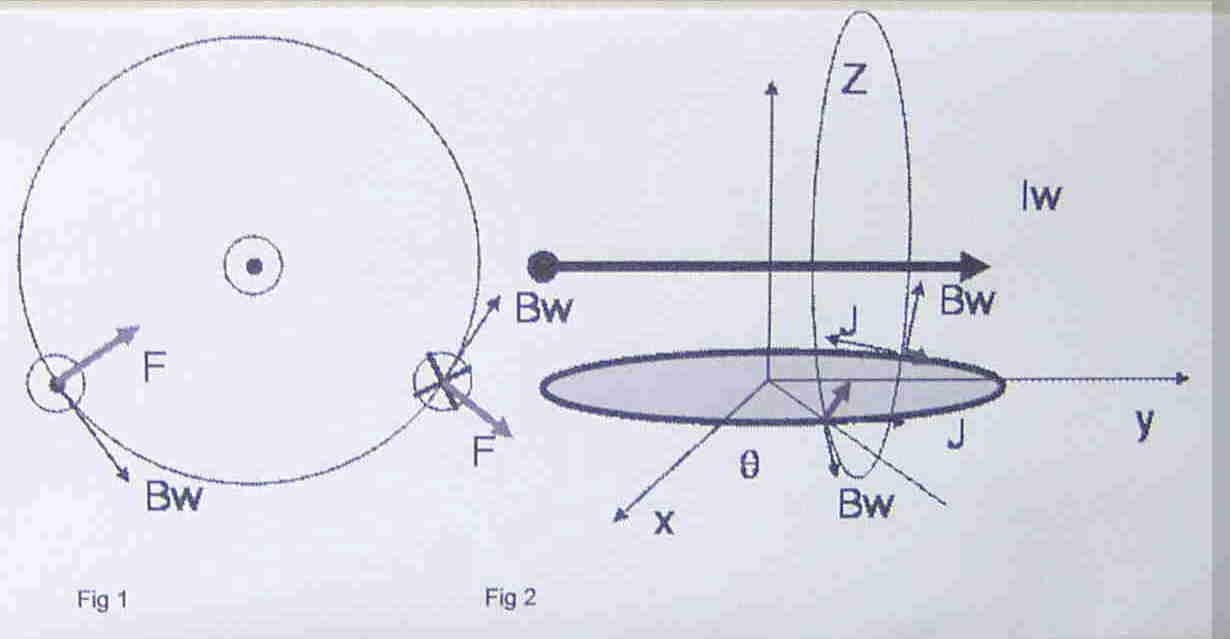Date: Sun Feb 26 21:40:23 2006
Posted By: Adrian E. Popa,
Area of science: Physics
ID: 1139820635.Ph
Message:
Greetings Nicor:
Your question would be a good one for a PhD examination! My two
experts, William and
Robin, both with PhD's in the field, still disagree on the solution.
William now
agrees with you and writes:
"I think I jumped too quickly to the symmetry argument. On
thinking over the
forces from incremental current elements in the ring on the current
elements in the
straight wire, I conclude that the two sides of the ring are anti-
symmetric with
respect to the wire (i.e., the currents go "with" the wire currents on
one side,
and "against" the wire currents on the other. Thus the forces are
equal, and
attract on one side and repel on the other. But this makes the forces
add, rather
than subtract. Thus there is a net force on the wire in the direction
perpendicular
to the axis of the ring. (And a torque on the ring around a diameter
parallel to the
wire)".
Robin still disagrees with both of you and provides the following:
"First of all, there appears to be some confusion over the origin
of the theta angle.
Most likely my mental drawing has my theta angle off by 90 degrees
from his (Nikors) which
would change a cosine into a sine. To me vertical means up, and in
the Z direction;
maybe he meant something else. Let me suggest the folliwing drawing
in
case there
is a misunderstanding.

Fig 1) In the left hand 2-D picture is a cross section of the
arrangement looking
down the -y axis at the origin and opposite the direction of the
wire. The large
circle represents a magnetic field line that intercepts the ring
current which is out
of the pane on the left and into the plane on the right. The magnetic
field vector
is circular. The component of the force F = JXB that lies in this
plane is on the
left inward toward the center wire, while on the right side of the
figure it points
outward away from the wire. Since there is no component of the wire
magnetic field
in the Y direction at all, the only contribution to the force in the Z
direction is
the term involving Fz = -Jy Bx; Jx does not appear there. Jy is anti-
symmetric and
Bx is symmetric about the Y axis so again there is no net force in the
Z direction.
Fig 2) In the right hand picture the same arrangement is sketched in 3-
D. The same
effects take place (the wire here is assumed to be of infinite extent.)
"
I have been interacting with both of my friends by e-mail and they
have been traveling.
I suspect that there is a symantic problem about the question
and perhaps the coordinate system
is part of the issue.
I have a third expert that is very active in the field and I will ask
if he has time to
look at the question. This will take some time and Mad Science
requires answers
to questions within a week. You might respond to this answer in about
a month and perhaps
I can clear up the issues between
the experts.
Best regards,
Adrian Popa
Current Queue |
Current Queue for Physics |
Physics archives
Try the links in the MadSci Library for more information on Physics.
MadSci Home | Information |
Search |
Random Knowledge Generator |
MadSci Archives |
Mad Library | MAD Labs |
MAD FAQs |
Ask a ? |
Join Us! |
Help Support MadSci
MadSci Network,
webadmin@madsci.org
© 1995-2006. All rights reserved.
